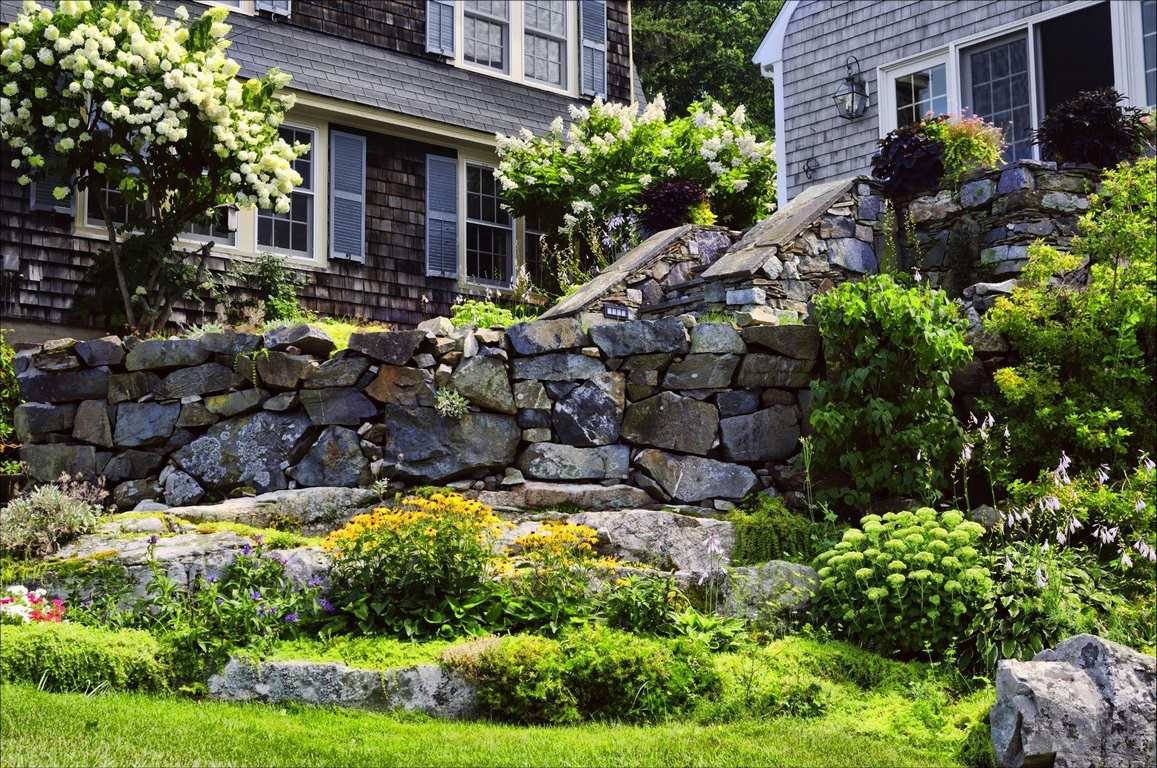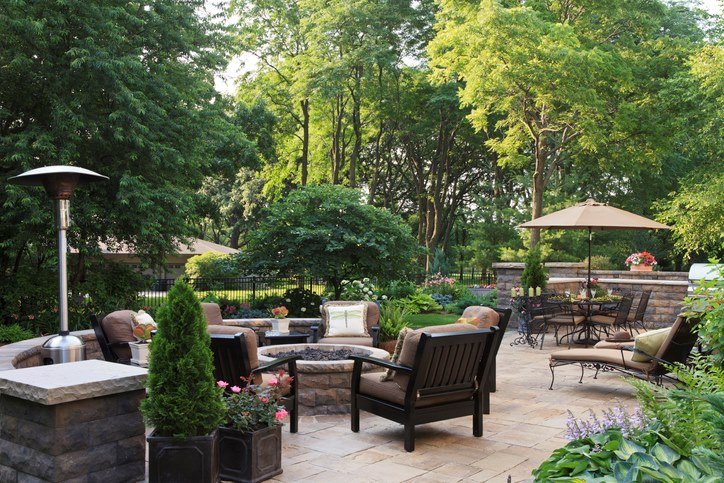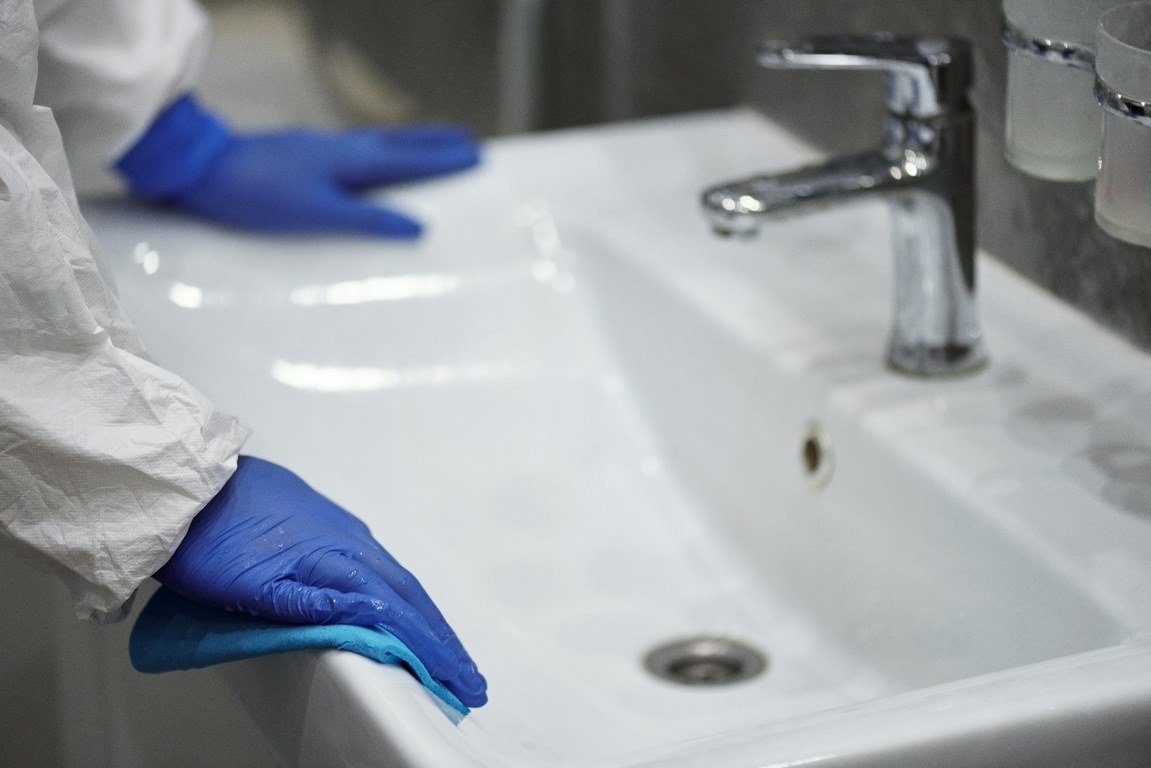Table of Contents Show
If you’re interested in incorporating some new landscaping on your property, there are some important considerations you should understand before beginning your landscape design.

To better understand how to design a landscape for your property, there are two main elements that make up a landscape.
They are known as hardscapes and softscapes. Balancing the two elements is crucial for creating a beautiful landscape that gives off an aesthetically pleasing and enjoyable experience.
Hardscapes
To begin, one of the most important differences between hardscape and softscape is the type of labor and materials involved.
Hardscape does what the name implies, it uses hard materials to provide a structure to your landscape design. Hardscaping involves incorporating heavier elements like retaining walls, pavers,s, and even fountains or other water features.
The main objective of hardscaping is to help create an organized look for your property. The majority of hardscape elements are solid, non-living objects that aren’t easily moved.
Depending on the kind of material, hardscaping can create different environmental effects, for example, pavement can increase the amount of runoff on a property. Now with hardscape elements, they do require a fair bit of expertise during their installation but afterward, they only require minimal future maintenance.
Read Also:
Softscape
Now, on the other hand, softscaping is the opposite of hardscaping. Softscaping usually happens after all the hardscape elements have been installed and the primary objective of softscaping is to fill in your landscaping design. S
Softscape features have the option of either being permanent or temporary and can easily be moved around. These living features can include grass, trees, shrubs, hedges, and of course, flowers.
This element of landscape design is known as the growing component. Softscape elements often change and evolve over time. When compared to hardscape features, softscape components add a softer touch and will adapt to the climate and other conditions.
Why is Balance Between Hardscapes and Softscapes Important in Landscape Design?
Now that you have an understanding of what each element entails, you may be wondering why it’s important to have a balance between the two. Both hardscape and softscape are necessary to make a landscape fully functional. Both elements are often used to emphasize not only the distinction between the two but also work to complement and enhance one another.
A well-designed (and properly designed) landscape will strike a balance between the two elements. If one element is disproportionate to the other, it can create uncomfortable or overstimulated environments.
Finding a balance between the two is crucial for creating a relaxed and functional atmosphere. If you have too much hardscaping on your property, it will not evoke a relaxed, calm, and lively feel, instead, it can feel very rigid and lifeless. On the other hand, too much softscaping can feel very cluttered and will require immense upkeep and maintenance to remain attractive looking.
Too much of one or the other in the front yard of your property can compromise your home’s curb appeal and bring down the property value in the neighborhood. This is why it’s important to find a way to balance the two.
How to Balance Hardscapes and Softscapes
Before you begin picking out hardscape and softscape, think of your budget first. Having a good understanding of how much you are willing to spend will help you narrow down and refine what elements of your landscape design you want. A good budget will help curate your choices when choosing elements since prices can vary drastically.
The second consideration to think about is how much maintenance you are willing to allocate for the future. This will determine the kind of hardscape and softscape elements to include.
Softscape elements like flowers will need yearly replacement and certain trees or shrubs will need to be pruned, while hardscape elements like fountains or water features will need to be tuned up and maintenance checks as needed.
In Conclusion
The easiest way to remember hardscapes and softscapes is to think of them like this: hardscapes refer to the hard, heavy, and permanent structures while softscapes refer to the soft, living, and movable elements within a landscape.
Both are necessary to have a balanced and functional environment. Although it is worth noting that if you have a preference that favors one element over another, that’s completely fine too! Working with a professional landscape company can help you achieve the look, feel and balance you want easily.
If you have any questions about hardscape or softscape elements, the best person to speak with is a professional landscaper. These professionals can help guide you when designing your landscape and suggest alternatives to help ensure the best and most functional elements.









